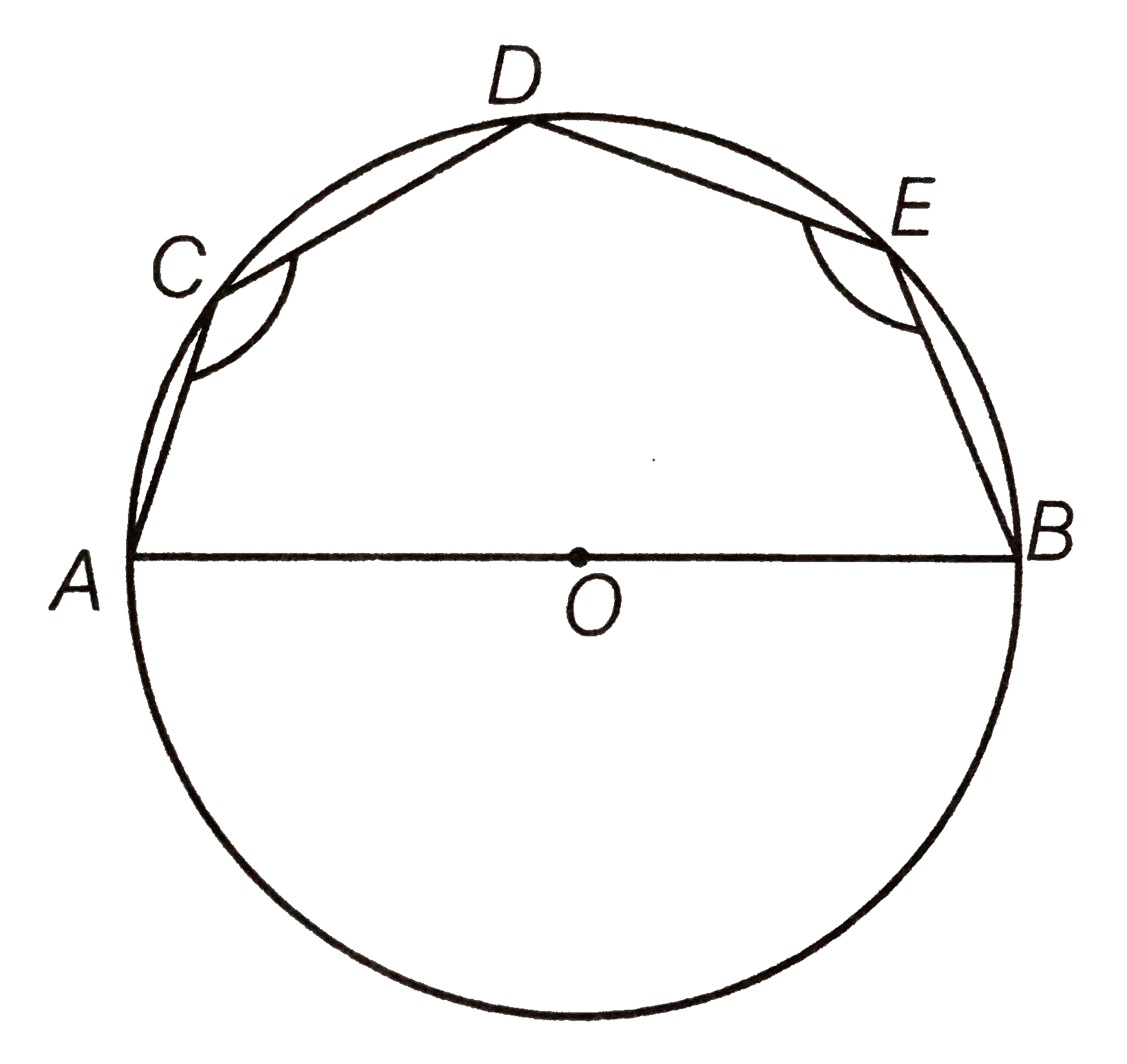AB is a diameter of a circle and C is any point on the circle. Show that the area of ABC is maximum, when it is isosceles.
To show that the area of triangle ABC is maximum when it is isosceles, we can follow these steps:
Step 1: Understanding the Geometry
Let AB be the diameter of the circle, and C be any point on the circle. Since AB is the diameter, angle ACB is a right angle (by Thales' theorem).
Step 2: Set Up the Problem
Let:
- The length of the diameter AB = 2A.
- The lengths AC = X and BC = Y.
From the right triangle ACB, we can apply the Pythagorean theorem:
AB2=AC2+BC2⟹(2A)2=X2+Y2⟹4A2=X2+Y2
From this, we can express Y in terms of X:
Y=√4A2−X2
Step 3: Area of Triangle ABC
The area (A) of triangle ABC can be calculated using the formula:
Area=12×base×height
Here, we can take AB as the base and the height from point C to line AB as Y:
Area=12×AB×h=12×2A×Y=A×Y
Substituting Y:
Area=A×√4A2−X2
Step 4: Maximizing the Area
To find the maximum area, we need to differentiate the area with respect to X and set the derivative equal to zero:
A=A√4A2−X2
Let A(X)=A√4A2−X2.
Differentiating using the product rule:
A′(X)=A⋅12√4A2−X2⋅(−2X)+√4A2−X2⋅0
This simplifies to:
A′(X)=−AX√4A2−X2
Setting A′(X)=0:
−AX=0⟹X=0orArea is maximum when X2=2A2
Thus, X=√2A.
Step 5: Finding Y
Substituting X=√2A back into the equation for Y:
Y=√4A2−(√2A)2=√4A2−2A2=√2A2=√2A
Step 6: Conclusion
Since X=Y, triangle ABC is isosceles when the area is maximized.
Let AB be the diameter of the circle, and C be any point on the circle. Since AB is the diameter, angle ACB is a right angle (by Thales' theorem).
Let:
- The length of the diameter AB = 2A.
- The lengths AC = X and BC = Y.
AB2=AC2+BC2⟹(2A)2=X2+Y2⟹4A2=X2+Y2
From this, we can express Y in terms of X:
Y=√4A2−X2
The area (A) of triangle ABC can be calculated using the formula:
Area=12×base×height
Here, we can take AB as the base and the height from point C to line AB as Y:
Area=12×AB×h=12×2A×Y=A×Y
Substituting Y:
Area=A×√4A2−X2
To find the maximum area, we need to differentiate the area with respect to X and set the derivative equal to zero:
A=A√4A2−X2
Let A(X)=A√4A2−X2.
A′(X)=A⋅12√4A2−X2⋅(−2X)+√4A2−X2⋅0
This simplifies to:
A′(X)=−AX√4A2−X2
Setting A′(X)=0:
−AX=0⟹X=0orArea is maximum when X2=2A2
Thus, X=√2A.
Substituting X=√2A back into the equation for Y:
Y=√4A2−(√2A)2=√4A2−2A2=√2A2=√2A
Since X=Y, triangle ABC is isosceles when the area is maximized.
Topper's Solved these Questions
Similar Questions
AB is a diameter of a circle and C is any point on the circle. Show that the area of ABC is maximum, when it is isosceles.
View SolutionAB is a diameter of a circle and C is any point on the circumference of the circle. Then (a) the area of ΔABC is maximum when it is isosceles (b) the area of ΔABC is minimum when it is isosceles (c) the perimeter of ΔABC is minimum when it is isosceles (d) none of these
View Solution
Knowledge Check
- Question 1 - Select One
If diameter of a circle is 2r cm, then area of the circle is :
Aπr2cm2B4πr2cm2Cπr22cm2D2πrcm2 - Question 2 - Select One
If diameter of a circle is r cm, then the area of a circle is :
Aπr2cm2Bπr24cm2Cπr22cm2D2πrcm2 - Question 3 - Select One
If diameter of a circle is r2cm, Then the area of a circle is :
Aπr2cm2Bπr216cm2Cπr24cm2Dπrcm2
AB is a diameter of a circle and C is any point on the circumference of the circle. Then
View SolutionIf AOB is a diameter of a circle and C is a point on the circle, then AC2+BC2=AB2.
View SolutionIf A(3,−4),B(7,2) are the ends of a diameter of a circle and C is a point on the circle then the circumcentre of ABC is
View SolutionIf A(3,-4), B(7,2) are the ends of a diameter of a circle and C(3,2) is a point on the circle then the orthocentre of the ΔABC is
View SolutionIn figure, AOB is a diameter of the circle and C, D, E are any three points on the semi-circle. Find the value of ∠ACD+∠BED.
 View Solution
View Solution

